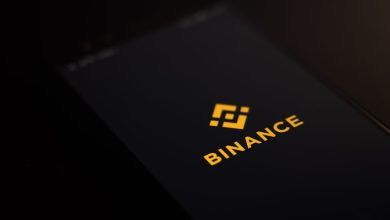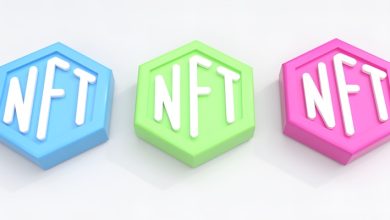The Growth of Decentralized Autonomous Organizations (DAOs)

- Understanding the concept of Decentralized Autonomous Organizations (DAOs)
- The evolution of DAOs and their impact on traditional organizations
- Challenges and opportunities for DAOs in the current business landscape
- Exploring the governance mechanisms of decentralized autonomous organizations
- Case studies of successful DAOs and their key features
- The future of decentralized autonomous organizations: trends and predictions
Understanding the concept of Decentralized Autonomous Organizations (DAOs)
Decentralized Autonomous Organizations (DAOs) are a groundbreaking concept in the realm of blockchain technology and cryptocurrency. DAOs are essentially organizations that operate without a central authority or hierarchical structure. Instead, decisions within a DAO are made collectively by its members through voting mechanisms encoded in smart contracts.
DAOs have gained popularity due to their potential to revolutionize traditional organizational structures by enabling transparent, secure, and efficient decision-making processes. By utilizing blockchain technology, DAOs ensure that all transactions and decisions are recorded on a public ledger, enhancing accountability and eliminating the need for intermediaries.
One of the key features of DAOs is their ability to incentivize participation and contribution from members. Members of a DAO are typically rewarded with tokens for their involvement in decision-making processes or for providing value to the organization. This incentivization model encourages active participation and fosters a sense of ownership among members.
Overall, DAOs represent a shift towards decentralized governance models that prioritize transparency, inclusivity, and efficiency. As the adoption of blockchain technology continues to grow, DAOs are expected to play a significant role in reshaping the way organizations operate and interact with their stakeholders.
The evolution of DAOs and their impact on traditional organizations
The evolution of DAOs has had a significant impact on traditional organizations, challenging their centralized structures and decision-making processes. Decentralized Autonomous Organizations (DAOs) have revolutionized the way businesses operate by utilizing blockchain technology to create transparent, secure, and autonomous systems. This shift towards decentralized governance has forced traditional organizations to adapt or risk becoming obsolete in the rapidly changing business landscape.
One of the key advantages of DAOs is their ability to operate without the need for intermediaries or centralized authorities. This allows for more efficient decision-making processes and greater transparency in how resources are allocated. Additionally, DAOs enable a more inclusive and democratic approach to governance, giving all stakeholders a voice in the decision-making process.
As DAOs continue to gain traction, traditional organizations are starting to take notice and explore how they can incorporate decentralized principles into their own structures. Some companies are experimenting with DAO-like structures to streamline operations, increase transparency, and improve trust among stakeholders. Others are exploring partnerships with existing DAOs to leverage their expertise in decentralized governance.
Overall, the evolution of DAOs is reshaping the business landscape and forcing traditional organizations to rethink their approach to governance and decision-making. By embracing decentralized principles, businesses can stay competitive in a rapidly changing environment and build trust with their stakeholders. The future of organizations may very well be decentralized, with DAOs leading the way in innovation and transparency.
Challenges and opportunities for DAOs in the current business landscape
Decentralized Autonomous Organizations (DAOs) face both challenges and opportunities in the current business landscape. One of the main challenges for DAOs is regulatory uncertainty. Governments around the world are still figuring out how to regulate DAOs, which can create legal risks for these organizations. However, this also presents an opportunity for DAOs to work with regulators to establish clear guidelines and foster a more supportive regulatory environment.
Another challenge for DAOs is the lack of traditional governance structures. Without a centralized authority figure, decision-making can be slow and cumbersome. On the flip side, this lack of hierarchy allows for greater transparency and inclusivity in decision-making processes. DAOs can capitalize on this by leveraging the wisdom of the crowd and fostering a more democratic approach to governance.
One of the biggest opportunities for DAOs lies in their ability to operate globally without the need for intermediaries. This can lead to cost savings, increased efficiency, and greater accessibility for participants around the world. Additionally, DAOs can tap into a global talent pool and bring together diverse perspectives to drive innovation and creativity.
Overall, DAOs have the potential to revolutionize the way businesses are run, but they must navigate the challenges of regulatory uncertainty and governance issues. By embracing these challenges as opportunities for growth and collaboration, DAOs can carve out a unique space in the evolving business landscape.
Exploring the governance mechanisms of decentralized autonomous organizations
One of the key aspects of decentralized autonomous organizations (DAOs) is the exploration of various governance mechanisms that drive decision-making within these entities. DAOs are unique in that they operate without a centralized authority, relying instead on smart contracts and blockchain technology to facilitate transparent and automated processes.
One common governance mechanism used by DAOs is a voting system, where token holders can cast votes on proposals to determine the direction of the organization. This democratic approach allows for a decentralized decision-making process, where the majority consensus drives the outcome of each decision. Additionally, some DAOs implement reputation-based systems, where individuals earn reputation points based on their contributions to the organization, which can then be used to influence decision-making.
Another governance mechanism used by DAOs is the use of decentralized autonomous agents, which are autonomous entities that can execute tasks and make decisions on behalf of the organization. These agents operate according to predefined rules encoded in smart contracts, allowing for efficient and automated decision-making processes.
Overall, the exploration of governance mechanisms within DAOs is crucial to ensuring the smooth operation and sustainability of these decentralized entities. By leveraging innovative technologies and novel approaches to decision-making, DAOs can continue to grow and evolve in the ever-changing landscape of decentralized finance.
Case studies of successful DAOs and their key features
Exploring successful DAOs can provide valuable insights into the key features that contribute to their growth and sustainability. Here are a few case studies of DAOs that have achieved significant success:
- The DAO: One of the earliest and most well-known DAOs, The DAO was a fundraising platform that allowed users to vote on investment proposals. Despite facing a major security breach that led to a significant loss of funds, The DAO demonstrated the power of decentralized decision-making and community governance.
- MolochDAO: MolochDAO is a grant-making DAO focused on funding Ethereum projects. It has a unique rage-quit feature that allows members to exit the DAO without losing their shares, providing a flexible and transparent way for participants to manage their contributions.
- Metacartel: Metacartel is a DAO that supports early-stage Ethereum projects through grants and mentorship. Its key feature is the ability to quickly make decisions and allocate funds, enabling rapid support for promising initiatives in the ecosystem.
These case studies highlight the importance of features such as transparent governance mechanisms, flexible exit options, and efficient decision-making processes in the success of DAOs. By learning from the experiences of these organizations, future DAOs can leverage these key features to drive growth and achieve their objectives.
The future of decentralized autonomous organizations: trends and predictions
The future of decentralized autonomous organizations (DAOs) looks promising, with several trends and predictions emerging in the space. One key trend is the increasing adoption of DAOs across various industries, as more organizations recognize the benefits of decentralized governance and decision-making processes. This trend is expected to continue as DAOs become more user-friendly and accessible to a wider range of users.
Another trend to watch is the rise of specialized DAOs focused on specific niches or industries. These specialized DAOs are designed to address the unique needs and challenges of their respective sectors, allowing for more tailored solutions and better outcomes. As the technology behind DAOs continues to evolve, we can expect to see more of these specialized organizations popping up in the future.
One prediction for the future of DAOs is the integration of artificial intelligence (AI) and machine learning algorithms into decentralized governance processes. By leveraging AI, DAOs can automate decision-making, improve efficiency, and enhance transparency. This integration has the potential to revolutionize how DAOs operate and further increase their appeal to a broader audience.
Additionally, the rise of decentralized finance (DeFi) has opened up new opportunities for DAOs to collaborate and interact with other decentralized platforms. This trend is expected to grow as more DeFi protocols emerge, providing DAOs with additional tools and resources to expand their operations and influence. The synergy between DAOs and DeFi could lead to exciting developments in the decentralized ecosystem.
In conclusion, the future of decentralized autonomous organizations is bright, with a range of trends and predictions pointing towards continued growth and innovation in the space. By staying abreast of these developments and embracing new technologies, DAOs can position themselves for long-term success and sustainability in the ever-changing landscape of decentralized governance.



